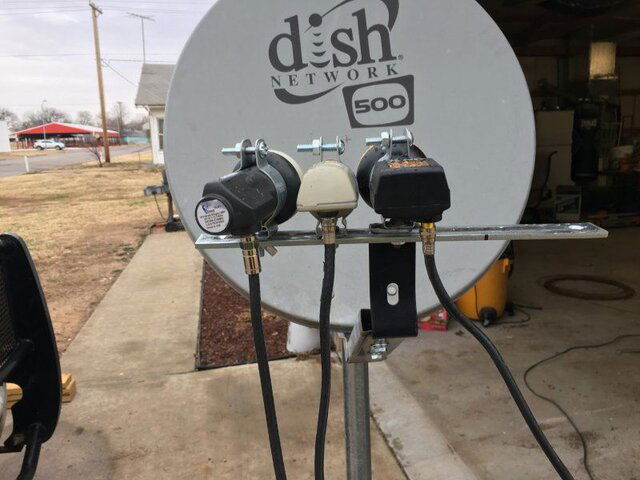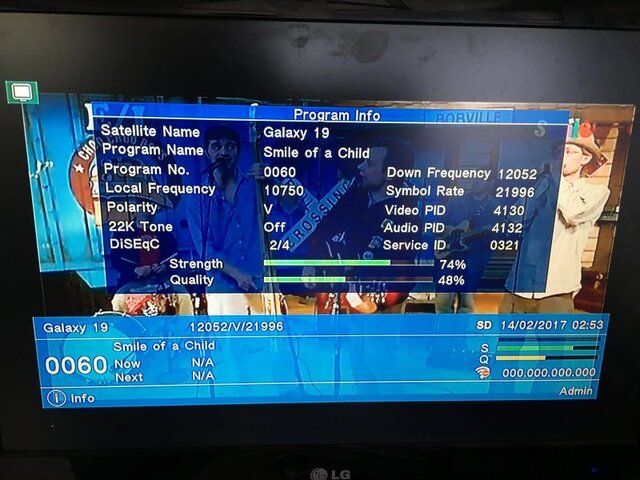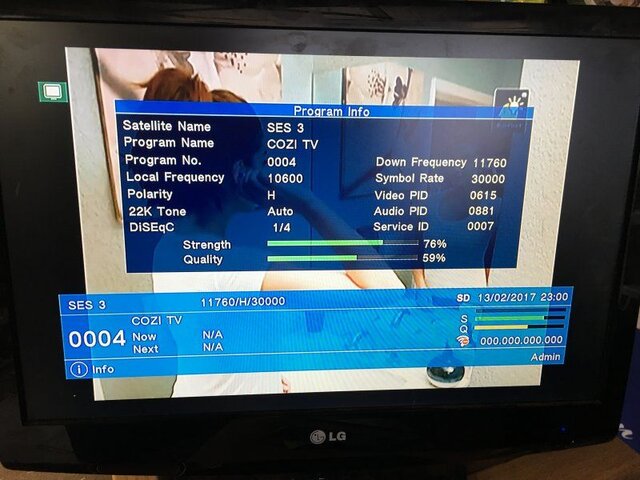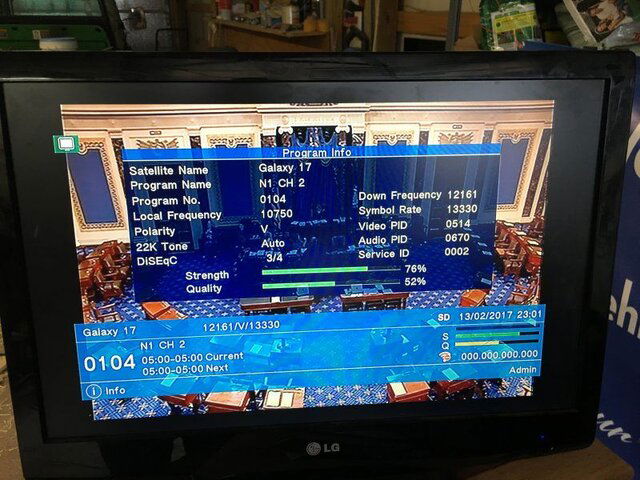Hi Everybody,
I am brand new to the fta arena and have some questions. First though I will list my current setup.
Anyway questions are here:
1) After I failed to get any FTA channels, I switched the rg6 cable back to my dish network receiver (I am a paid subscriber currently) and surprisingly my one lnb was able to pull in all 3 dish satellites (110, 119 and 129). If that is the case, what is the reason the dish 1000.2 has 3 lnb's on it? Is it just to help ensure better potential to hit all 3 satellites?
2) Is it normal for a universal linear lnb to be able to pick up dish network signals and send them to the dish network receiver ? just seems odd to me that this worked and everything i have read said the dish network lnb's are circular polarity and not linear.
3) My dish is a 25" oval and I have read that for FTA you typically need a bigger dish (30" or larger) to make up for the lower power of those satellites like Galaxy 19. I have seen for sale a 36" oval Direct TV dish (Directv 36EDS International) that was used for subscribers to get international channels. Are the odds good that this dish will work fine for FTA reception? Or is it better to go with a more traditional circle dish instead? Would a circular dish pick up a broader range of signal compared to an oval one?or vice versa?
4) On my fta receiver I noticed that the TP of the listed satellites was off somewhat from what was listed on lyngsat. Does that matter much? An example of this is that lyngsat would say I could find FTA channels at 12058 H 22000 but on my receiver it might have said (I am not looking at it now) 12060 H 22000? Is this significant or do the satellites drift a little bit over time?
5) My universal lnb would say that it could handle up to Input Frequency Range LOW Band:10.7~11.7GHz High Band:11.7~12.75GHz however the settings in my receiver only went up to like 1175 for the LNB. Does that mean my receiver can't support the full range of the lnb? Is that maybe why I couldn't hit fta channels with my 25" 1000.2 dish?
6) My receiver had settings for the LNB to be ON, 13v or 18v. I noticed when playing around with it for a satellite or two if I switched it to 18v that I could sometimes get better quality of signal... however that still didn't help me pick up any stations today. What is the difference between 13v or 18v with the LNB?
7) Has anybody had decent success using a tripod with a 33" or 36" dish that is placed on a deck (maybe 3 feet off the ground) ? I have a deck that faces nicely to the south but I have some fairly tall trees (50feet) that are about 3/4 of an acre away from the deck). Was thinking this might be easier for me to tune FTA until I get better at lining up the satellites -- although i realize maybe once leaves come on the trees I might not get signal then lol
8) Has anybody used the winegard DS-2076 dish for FTA with success?it says its a 30" (76cm) dish ?
Also sorry in advanced if this is the wrong forum for this post and questions. Thanks for answering my questions... I am excited about this new hobby and hope someday soon I can get some fta reception!!
I am brand new to the fta arena and have some questions. First though I will list my current setup.
- Dish network 1000.2 dish (I measured this across and it was 25")
- iSmart F1 hd fta receiver
- X2- Full HD KU Single Universal LNB "0.1 DB"
Anyway questions are here:
1) After I failed to get any FTA channels, I switched the rg6 cable back to my dish network receiver (I am a paid subscriber currently) and surprisingly my one lnb was able to pull in all 3 dish satellites (110, 119 and 129). If that is the case, what is the reason the dish 1000.2 has 3 lnb's on it? Is it just to help ensure better potential to hit all 3 satellites?
2) Is it normal for a universal linear lnb to be able to pick up dish network signals and send them to the dish network receiver ? just seems odd to me that this worked and everything i have read said the dish network lnb's are circular polarity and not linear.
3) My dish is a 25" oval and I have read that for FTA you typically need a bigger dish (30" or larger) to make up for the lower power of those satellites like Galaxy 19. I have seen for sale a 36" oval Direct TV dish (Directv 36EDS International) that was used for subscribers to get international channels. Are the odds good that this dish will work fine for FTA reception? Or is it better to go with a more traditional circle dish instead? Would a circular dish pick up a broader range of signal compared to an oval one?or vice versa?
4) On my fta receiver I noticed that the TP of the listed satellites was off somewhat from what was listed on lyngsat. Does that matter much? An example of this is that lyngsat would say I could find FTA channels at 12058 H 22000 but on my receiver it might have said (I am not looking at it now) 12060 H 22000? Is this significant or do the satellites drift a little bit over time?
5) My universal lnb would say that it could handle up to Input Frequency Range LOW Band:10.7~11.7GHz High Band:11.7~12.75GHz however the settings in my receiver only went up to like 1175 for the LNB. Does that mean my receiver can't support the full range of the lnb? Is that maybe why I couldn't hit fta channels with my 25" 1000.2 dish?
6) My receiver had settings for the LNB to be ON, 13v or 18v. I noticed when playing around with it for a satellite or two if I switched it to 18v that I could sometimes get better quality of signal... however that still didn't help me pick up any stations today. What is the difference between 13v or 18v with the LNB?
7) Has anybody had decent success using a tripod with a 33" or 36" dish that is placed on a deck (maybe 3 feet off the ground) ? I have a deck that faces nicely to the south but I have some fairly tall trees (50feet) that are about 3/4 of an acre away from the deck). Was thinking this might be easier for me to tune FTA until I get better at lining up the satellites -- although i realize maybe once leaves come on the trees I might not get signal then lol
8) Has anybody used the winegard DS-2076 dish for FTA with success?it says its a 30" (76cm) dish ?
Also sorry in advanced if this is the wrong forum for this post and questions. Thanks for answering my questions... I am excited about this new hobby and hope someday soon I can get some fta reception!!


 to SatelliteGuys!!!
to SatelliteGuys!!!


